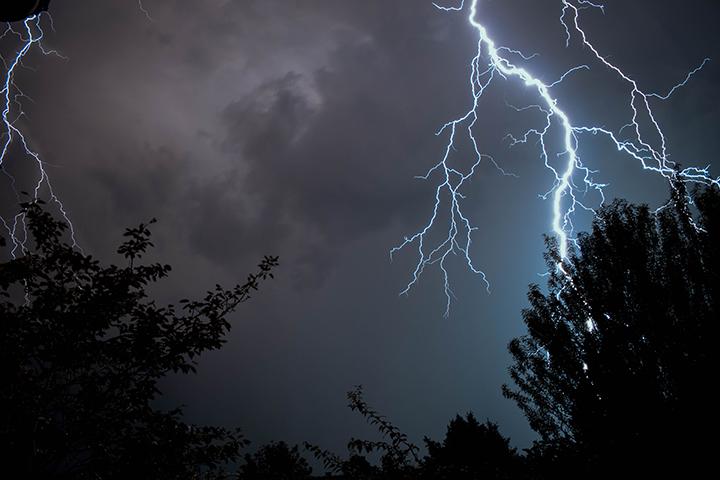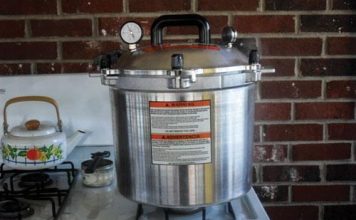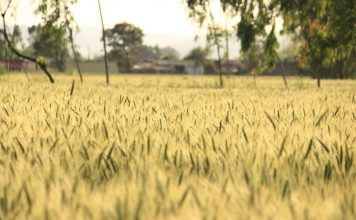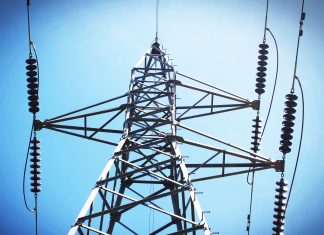 |
|
| Issue #139 • January/February, 2013 |
November’s Superstorm Sandy on the Northeastern coast of the United States was our most recent grand reminder that society is fragile, most people are not ready to take care of themselves if they are temporarily displaced from their homes or if their electricity goes off for a few days, and Government is incapable of responding effectively to these sudden catastrophes.
So you have to be prepared to take care of yourself. We’ve said that many times in this magazine and have written many articles about it, but it still amazes me that every time a catastrophe occurs most people seem to be caught unprepared.
The true gravity of the calamity for tens of thousands of Superstorm Sandy victims, especially for those isolated on New York’s Staten Island, did not make the headlines it deserved due to the Presidential election. Thousands were without adequate food, clean water, or warmth for more than two weeks as the temperatures plummeted into the 30s. Governor Cuomo has since asked the federal government for $30 billion in reconstruction aid.
Don’t allow yourself to fall victim to a future storm or to any event that causes a temporary loss of electricity or compels you to leave your home for several days, and don’t get caught out on the road during such an event without the ability to comfortably cope. There is no need to be inconvenienced, or worse to have your safety threatened, when it takes only a modest amount of preparation to ready yourself for most situations.
I’m going to show you how I keep myself and my family prepared as an example of what can be done. Every person’s situation is somewhat unique, I think, so maybe you can borrow some ideas from me, then customize your preparedness plan to suit your own situation. My system is tailored to my personality and my family’s location in the dense woods of the Pacific Northwest, next to an ocean teeming with an inexhaustible source of easy-to-catch fish. My home is also in bear country and is heavy with mountain lions so that if you’re out and about, it is wise to carry a sidearm. If you live in the desert or the freezing cold Midwest, your plan will likely differ markedly from mine.
The mental plan
I have a mental preparedness plan in my head in the event of a catastrophe that calls for me to make a decision on how my family will cope with a looming disaster, and I immediately ask myself the question: Do we stay at home and weather the disaster or do we leave home?
If we can stay at home, that is the best case scenario since we are well equipped to survive a brief or long-term disaster, having an ample supply of food and supplies, gravity-fed spring water that originates a few hundred yards from the house, several heat and cooking sources that include propane and wood, several electricity sources that include a backup generator and photovoltaics, medical supplies, guns and ammo, etc. I am also relatively isolated but know all my neighbors and can count on them if survival cooperation is required.
But if we cannot stay at home for some reason (maybe my house has slid down the hill due to the earthquake, avalanches, and tsunami that is predicted to one day hit my area), then I go to my mobile plan, either in a vehicle or on foot. Hopefully, it will be in a vehicle and preferably my family will be able to transfer to our Sequoia SUV since this 4WD would make an excellent survival vehicle. This SUV is capable of being a roaming house on wheels and can traverse almost any terrrain, but, just in case, I have a well-stocked pop-up camper I can pull behind me.
In the event I must choose the mobile option, I keep three preparedness packs in the trunk of the sedan I normally drive:
- my 10-day pack, which holds the smaller items necessary for survival, such as water treatment tablets, first aid kit, fishing kit, fire starters, .45 auto, etc.
- my rifle pack, which holds my two-piece stainless steel, scoped 10/22 rifle with 10 and 30-round clips
- my golf bag
Golf bag? What’s a golf bag got to do with preparedness?
I make preparedness dovetail right into other aspects of my life. Since I am semi-retired and play golf several days a week, and since I need food, water, and foul weather gear for playing golf in rainy Oregon, I share my food, water, and lightweight but very protective golf rain gear between my survival packs and golf bag. This way I am always refreshing the jerky, smoked salmon, power bars, etc., that I munch on while playing golf, and refreshing is important.
Refreshing your survival food and other supplies such as flashlight and radio batteries is vital if they are to be suitable for use in an emergency. Many people have had the sad experience of opening their survival pack to find dead batteries in their flashlight and radio, not to mention food that has become a biological experiment.
My all-important high-quality compact LED flashlight that I will rely on in my survival pack is kept in the center console of my car where I access and use it often. It has a high quality, rechargeable battery. My cell phone and iPad, both of which I consider part of my preparedness pack, are also always with me or in my car, as are the charging cords for all these devices. A cell phone and iPad are the modern day versions of the emergency shortwave radio, allowing us to keep in contact with people should we have to become mobile in an emergency. Since both my cell phone and iPad access the telephone and internet via Verizon towers (Verizon is the only service with reliable access in remote areas) and since the Internet went down for some time during Superstorm Sandy, you still need a battery- operated or wind-up emergency radio as a backup. That’s in my preparedness pack.
I anticipate some of you are asking how I keep track of all this stuff, since some of it is in my preparedness pack, some in my golf bag, some in the center console of my car, and the cell phone and iPad are probably in my pocket and who knows where else.
It’s a good question, and I have a sensible answer: I keep a brief laminated list in my pocket at all times. On one side is a list of things I must remember to take if I find myself in a mobile survival situation. It includes: 10-day pack, 10/22 pack, food and rain gear (from the golf bag), cell phone, iPad, camera, laptop and wand, chargers, extra water, axe, machete, Mucks, field jackets, blankets, Humless, solar panel.
On the other side of the card (you probably already guessed it) is the list of things I must remember to do to swing a golf club correctly. I refer to the golf side of the list nearly every day.
Most of the items on the list are self explanatory. A few that may not be are:
A wand is a thumb-sized Verizon device to access the Internet. It is more reliable than a satellite dish and faster. I keep it in my pocket, have used one for several years ($50 a month), and access the Internet from anywhere in the world under any conditions. If your satellite is down, or if your cable is down, chances are the wand still works just fine.
A Humless system is essentially an RV battery pack put out by Humless (humless.com) but it contains cords and adapters to charge anything, including my vehicle and whatever hooks into a USB port. It comes with a big camp light, holds a charge for a year if not used, and it can be recharged a variety of ways including using a folding solar panel that fits nicely into the trunk of my car.
Mucks are warm, comfortable, all-weather boots. Most fishermen wear them in the Pacific Northwest. Santa Claus probably wears Mucks.
10-day pack
My 10-day pack contains the following:
- water purification tablets and water purification straw
- first aid kit including prescriptions, aspirin, Advil, toothpaste and brush, floss, soap, burn ointment, antibiotic
- 2 rechargeable, powerful LED flashlights
- cold weather clothes for winter, extra rain gear
- extra socks, stocking caps, underwear
- .45 auto pistol and ammo
- high quality binoculars
- magnesium/flint fire starters, propane lighters, matches
- P38 (military can opener)
- Gerber multi-tool
- roll of strong string, plastic bags
- a few space blankets
- fishing kit (for salt and fresh)
- battery/wind-up radio
- freeze dried meals
- mess kit, canned heat
- whistle
- compass
- spare eyeglasses
- a rigid military-style knife I use mainly for prying mussels off seashore rocks
- extra cash
I also keep a small axe and machete in the trunk, along with extra water, a brick of .22 ammo, and an extra box of .45 ammo. I always carry on my person a jackknife, Spyderco knife, high-quality pocket camera, and cell phone. Why is my camera part of my preparedness pack? It just is. I’m a magazine publisher after all; I like to document stuff. You’ll have quirky things as part of yours too.
My gear is not inexpensive, but it is meant to keep me and my family safe in an emergency so I invested in quality over the years. Besides, I get a lot of pleasure out of it on a fairly regular basis, as I also like to shoot my 10/22 and .45, use my Zeiss binoculars to watch whales and osprey, and like to fish occasionally.
If I am forced to leave my vehicle and go on foot, a scenario I only anticipate as the result of some extraordinary misfortune such as my car being washed away or tumbling down a hill, my 10-day pack and 10/22 pack carry easily, but I’d obviously have to leave things like the Humless system behind. The ability to stay with a vehicle is very important, as it provides shelter and protection from Nature. The best option, of course, is to stay at home, even if home has become severely damaged.














